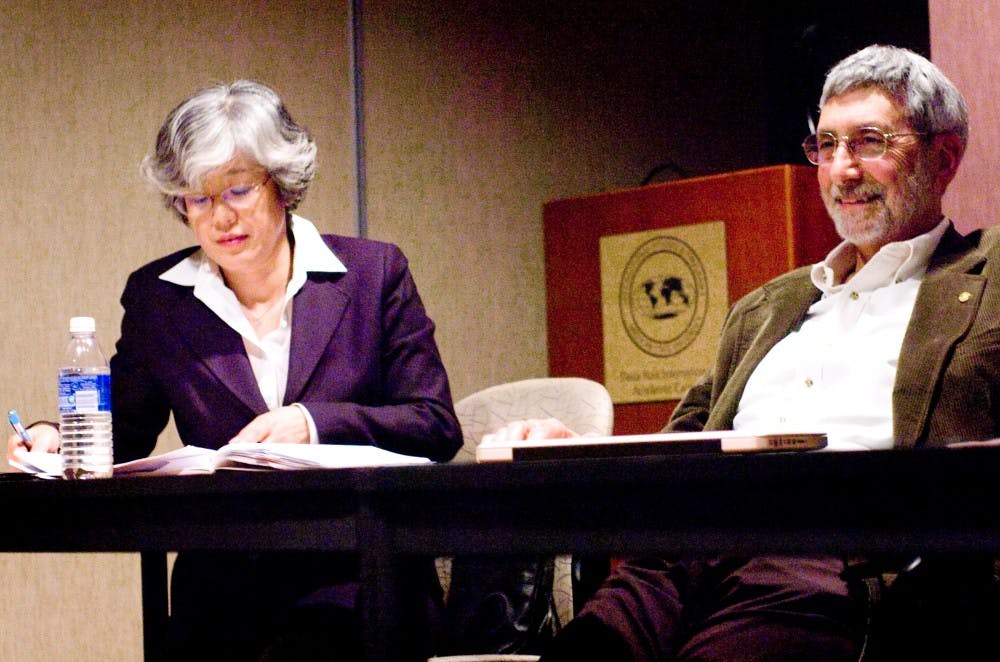It began with a moment of silence.
About 50 people packed into Room 303 International Center on Wednesday evening took a moment of silence to remember the more than 9,000 victims of the March 11 earthquake and the following tsunami off the coast of northeastern Japan.
Afterward, a panel of MSU professors and area experts presented information to attendees of the community forum “On The Crises In Japan” the reality of the recent crises in Japan — including the 9.0 magnitude earthquake, tsunami and subsequent nuclear power plant disasters that have followed.
Midori Takeuchi, the deputy consul general of the Consulate-General of Japan in Detroit, also spoke at the event.
Ethan Segal, associate professor of Japanese history, said he was contacted by many people after the earthquake and tsunami who were seeking more information about the tragedy.
“There were conflicting things going out in news media, and we thought one of the few things we could do is to bring together the expertise of our faculty to give the most accurate information as we can,” he said.
Segal said the death toll in Japan has been estimated at more than 9,000 people and the number of those missing is in the range of 13,500.
Japan has strict building codes and is seen as a world model for handling these kinds of natural disasters, he said.
“I think I can say with some measure of confidence that the earthquake itself, given its magnitude, did very little damage,” Segal said. “Sadly, the tsunami is a different story.”
The Japanese earthquake can be compared to the 1960 earthquake in Chile — a 9.5 magnitude event, said Kazuya Fujita, a professor of geological sciences.
“Certainly this ranks up there as one of the mega earthquakes in the last century,” Fujita said.
Still, the earthquake only caused about 10 percent of the damage in the country, he said. The tsunami was the major culprit of the devastation.
Tsunami waves travel at an average speed of 500 miles per hour, Fujita said.
Segal said there has been a tendency of the American media to overdramatize some of the events in Japan, even though the nuclear power plant issues must be taken seriously. Some news organizations are giving the impression that the entire country is falling apart and that is not the case, he said.
Zoology senior David Hall said he has been avoiding watching media coverage of the Japan crises because of “all the hype.”
He came to the event to learn about the reality of the situation, he said.
“The nuclear reactors — that’s what everyone seems to be getting up in arms about,” Hall said.
The reactors at the Fukushima nuclear plants were made in 1970, said Walter Benenson, a university distinguished professor of physics.
If a person owned a car from that long ago they might call it an “antique,” but these six reactors are maintained carefully compared to the Chernobyl nuclear power plant incident in 1986, which was the result of a cheaply built and mismanaged plant, he said.
Support student media!
Please consider donating to The State News and help fund the future of journalism.
Discussion
Share and discuss “Panel educates about disasters in Japan” on social media.





